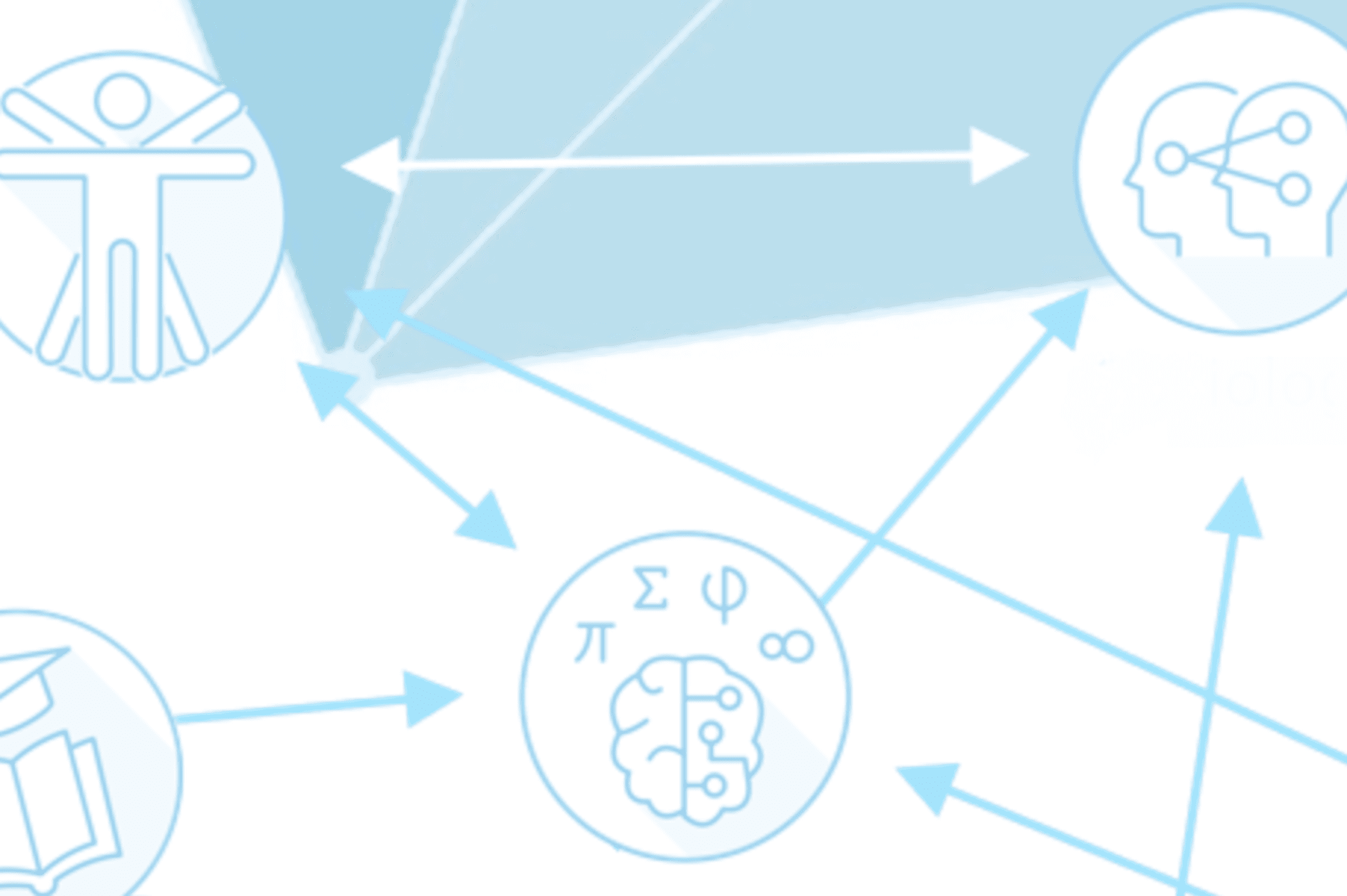How do you integrate the different components of intelligence into one comprehensive research effort? SCIoI researchers explain
Intelligence research encompasses many different disciplines, from animal behavior and physics to psychology and robotics. Yet, it is often a fragmented endeavor; its research projects can be conceptually distant from one another, with few or no overlaps and connections between them. Bridging the gaps between those disciplines is crucial if we want to develop a comprehensive understanding of intelligence. Therefore, the integration between our projects and disciplines is one of the pillars of our cluster’s mission.
We’ve asked three of our researchers, Yating Zheng, Pu Xu, and Dimosthenis Kontogiorgos, to work us through the concept of integration and what it means for SCIoI.
What is integration?
“Integration” is the opposite of “decomposition.” Since the study of intelligence is such a monumental task, it is practical to decompose this large problem into smaller ones. But intelligence is a complex phenomenon, and decomposition implies potentially missing important insights on how different components play together to generate intelligent behavior. Thus it’s also important to integrate the outcome of this decomposition, which means putting the pieces back together into a larger intelligent system. And that is what we are doing at SCIoI: every project represents one component of intelligence, and we want to integrate all of these components into one comprehensive research effort.
Why is integration important?
When we do research at SCIoI, each of the individual researchers usually focuses on their own components. However, there is an assumption called “weak decomposability.” What this means is that in a larger intelligent system, although there are components, there is also this in-between area where components interact with each other, and that’s where interesting holistic behavior emerges. The interaction between components is as important as the components themselves. And the only space that allows us to study this interaction is the integration projects.
In fact, most ongoing intelligence research ignores the interactions between components. And if they are considered, for example in larger systems, integration is not regarded as a scientific problem but only as a technical necessity. What usually happens is that scientists from different research fields try to make idealized assumptions and solve the issues from their own perspectives and research interests, isolated from the requirements of interactions with other components. Integration offers a general high-level research goal for scientists from different fields to consider how their research topics could be joined together to produce integrated systems.
How do we achieve integration?
In order to create a framework for integration that brings together many of the 50+ projects at SCIoI, our cluster has created three “example behaviors”: Escaping from an escape room, learning in social interaction, and collective shepherding. These behaviors are examples of individual intelligence, social intelligence, and collective intelligence. The idea is that we can build three systems, one for each behavior, and in these systems integrate the different outputs of the projects in Research Unit 1. Another path for integration is to directly integrate the output of two or more projects, outside of the example behaviors. For both of these integration paths, we have seen significant progress at SCIoI so far. And –very much in accordance with our initial hypothesis – these efforts have led to very useful insights about intelligence.
How does one get started on integration?
It’s actually not very difficult. One wisdom says that to integrate components you have to first integrate people and ideas. So if you notice a connection between your project and somebody else’s, that’s already a good starting point to explore further. Can you imagine a task that requires both of the projects’ outputs? How would you build such a system? How would the two components interface?
Another concrete measure to support integration is hackathons. What you’ll see at an integration hackathon for, say, Behavior 1 (individual behavior), are six to ten researchers sitting around the lockbox, which is a wooden wall featuring mounted mechanical puzzles that the robotic arm tries to solve. These researchers, each working on a different individual intelligence project, are putting their heads together to try and find bridges between their projects. First, they will try to identify interfaces between the research topics in the different projects to figure out what aspects of those projects are related to the example behavior in question. Once an aspect is defined, it provides us with a way to combine two projects from the same behavior group. Then they start implementing the high-level example behavior, which in turn will give feedback to each individual project and help the different researchers solve the respective issues by using the principles of the specific disciplines involved.
Can you give some examples of integration successes?
The first success is that integration helps us check and calibrate our assumptions. An example of this is the integration effort between SCIoI projects 1 and 2 (P001 and P002). Vision scientist Nicolas Roth (P001), who studies human eye movements, and colleagues produced a model to predict human gaze behavior when visually exploring a scene. But when roboticist Aravind Battaje (P002) tried to apply that to a robot for visual search, he found out that the vision scientists had assumed a fixed field of view. That’s impractical for robots because the robot moves and changes the field of view constantly. Resolving this incompatibility not only contributed to the integration project but also helped discover new research directions for Nico and Aravind’s individual projects and even spawned a new SCIoI project proposal (P057).
A success directly related to the example behaviors was produced by Xing Li and Oussama Zenkri. They built a system for solving the lock box, emphasizing the need for robustness to environmental variability. It is a very reliable system that was demonstrated for several hours without failure at the SCIoI Fair. Along the way, they discovered that roboticists might have been building robotic systems the wrong way. Their research suggests very clear ideas for how to increase the robustness of robotic systems by copying approaches to integration that are pervasive (and highly successful) in biology.
What are the main challenges of integration?
The biggest challenge is that we always feel like we are in a bit of a Catch-22 situation, because we are trying to build a large, weakly decomposable intelligent behavior, and we are doing that in order to study how to build large weakly decomposable intelligent behaviors. It’s a bit like the situation where you need work experience to get a job, but you can’t have that work experience unless you have a job. This makes the initial bootstrapping period very chaotic and painful, but the outcomes have been very rewarding so far. And in a way, this is exactly what science is about: venturing into the unknown to learn about the unknown.
––SRS








